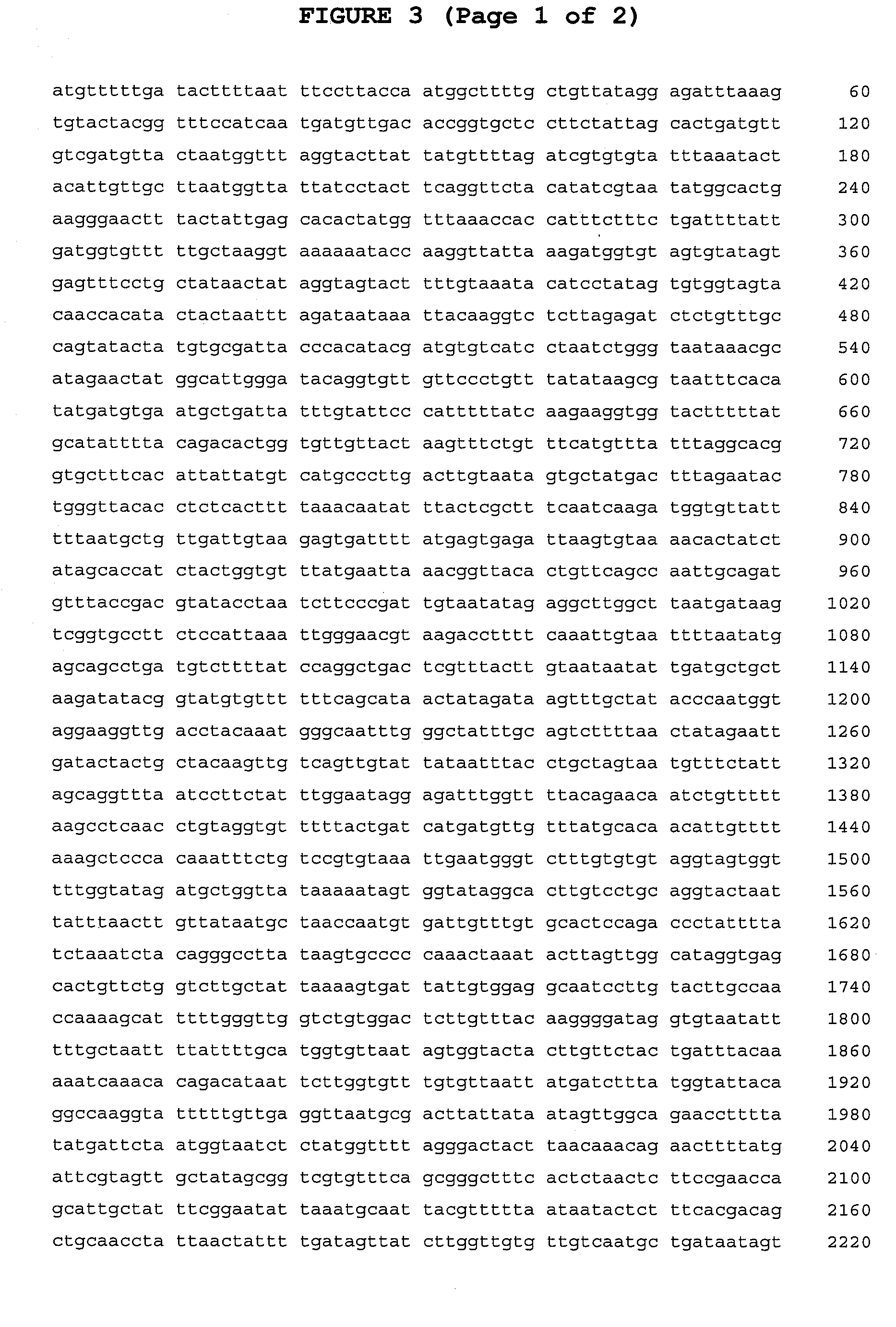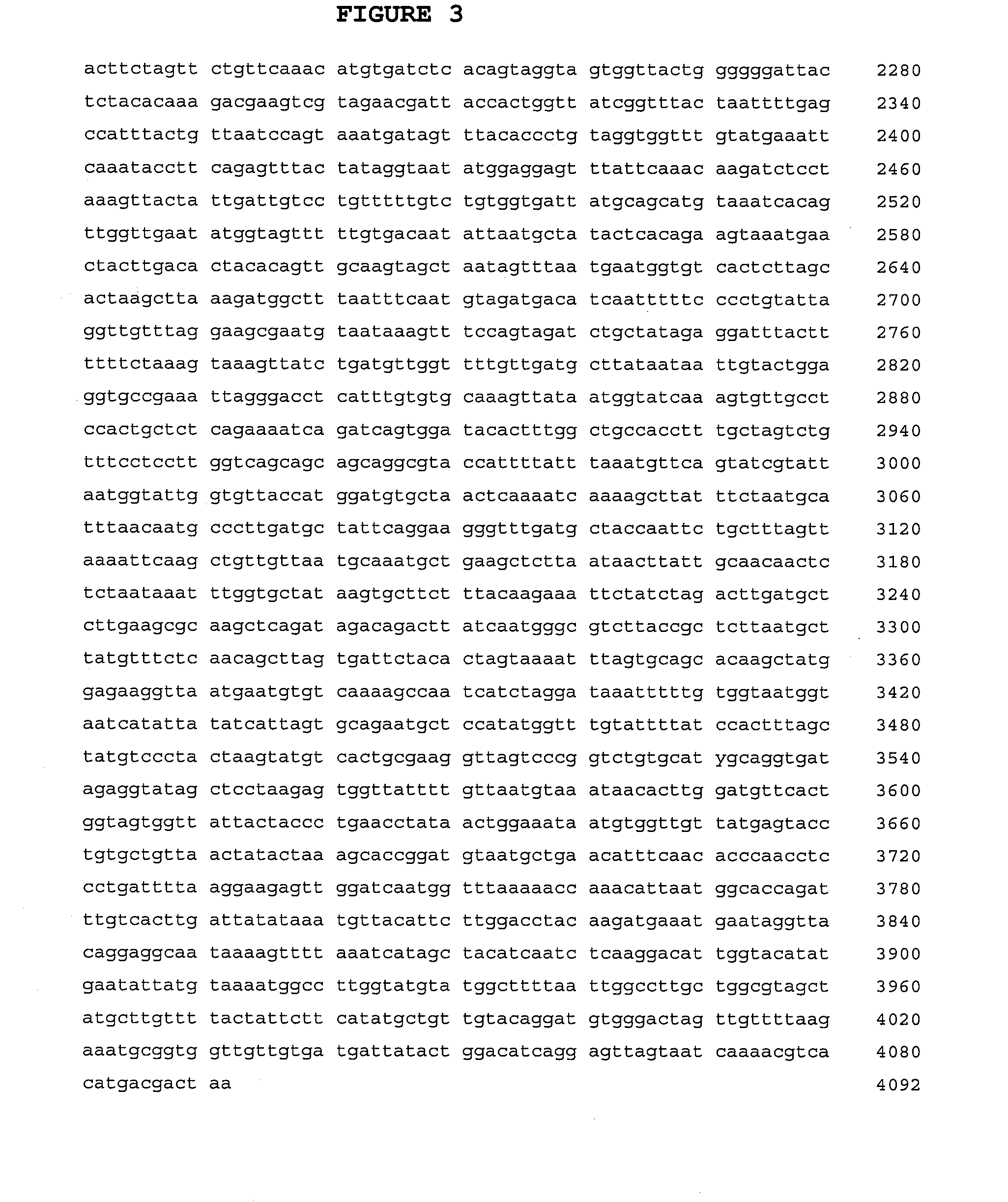Canine respiratory coronavirus (CRCV) spike protein, polymerase and hemagglutinin/esterase
a coronavirus and canine respiratory technology, applied in the field of biological materials, can solve the problems of coronaviruses not suspected, considerable treatment costs, and disruption of schedules in training kennels
- Summary
- Abstract
- Description
- Claims
- Application Information
AI Technical Summary
Benefits of technology
Problems solved by technology
Method used
Image
Examples
example 1
Detection of a Novel Coronavirus Associated with Canine Infectious Respiratory Disease
Summary
[0318]An investigation into the causes of canine infectious respiratory disease (CIRD) was carried out in a large re-homing kennel. Tissue samples taken from the respiratory tract of diseased dogs were tested for the presence of coronaviruses using RT-PCR with conserved primers for the polymerase gene. Sequence analysis of four positive samples showed the presence of a novel coronavirus with high similarity to both bovine and human coronavirus (strain OC43) in their polymerase and spike genes whereas there was a low similarity to comparable genes in the enteric canine coronavirus. This canine respiratory coronavirus (CRCV) was detected by RT-PCR in 32 / 119 tracheal and 20 / 119 lung samples with the highest prevalence being detected in dogs with mild clinical symptoms. Serological analysis showed that the presence of antibodies against CRCV on the day of entry into the kennel decreased the risk...
example 2
Cloning and Expression of CRCV Spike
[0404]The CRCV Spike gene was cloned using the primers listed in Table 5 and using the following cloning strategy, which is illustrated in FIG. 18.[0405]1. The spike gene was amplified in four overlapping fragments (A, B, C, D).[0406]2. The PCR product Sp5-Sp2 (B) was joined to the product Sp1-Sp8 (C) using the PvuII site in the overlap.[0407]3. This fragment was cloned into the pT7blue2 vector (Novagen) using the restriction sites NcoI and BstXI.[0408]4. The PCR fragment SpFXho-Sp6 (A) was joined to BC using the restriction site BstXI in the overlap and the XhoI site that had been incorporated into the primer SpF-Xho.[0409]5. Fragment ABC was moved into the baculovirus transfer vector pMelBacB (Invitrogen) using the restriction sites XhoI and NcoI.[0410]6. The PCR fragment Sp7-SpR-HisTag-Eco (D) was joined to ABC using the restriction site NcoI in the overlap and the EcoRI site that had been incorporated into the primer SpR-Eco-HisTag resulting i...
PUM
| Property | Measurement | Unit |
|---|---|---|
| diameter | aaaaa | aaaaa |
| temperature | aaaaa | aaaaa |
| volume | aaaaa | aaaaa |
Abstract
Description
Claims
Application Information
 Login to View More
Login to View More - R&D
- Intellectual Property
- Life Sciences
- Materials
- Tech Scout
- Unparalleled Data Quality
- Higher Quality Content
- 60% Fewer Hallucinations
Browse by: Latest US Patents, China's latest patents, Technical Efficacy Thesaurus, Application Domain, Technology Topic, Popular Technical Reports.
© 2025 PatSnap. All rights reserved.Legal|Privacy policy|Modern Slavery Act Transparency Statement|Sitemap|About US| Contact US: help@patsnap.com



